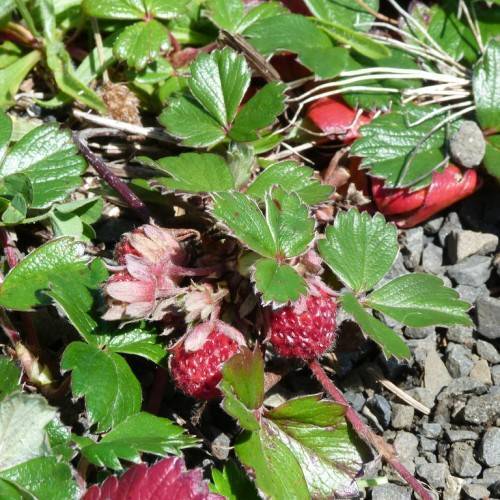
coastal strawberry
Fragaria chiloensis
Also Known As - wild strawberryCycle:
Herbaceous Perennial
Watering:
Average
Hardiness Zone:
4
Flowers:
Flowers In Spring
Sun:
Full sun, Part sun/part shade
Soil:
Humus rich, Well-drained
Fruits:
Fruits In Summer Ready In Summer
Edible:
Yes
Leaf:
Yes
Growth Rate:
High
Maintenance:
Moderate
watering
Water garden strawberries thoroughly, allowing the water to soak to a depth of at least 6-8 inches. Water once per week in the morning, ensuring the soil remains evenly moist but not soggy. This can vary slightly depending on weather conditions, with more frequent watering needed in hotter weather. Test the soil moisture by taking a fingertip and digging it into the soil. If the soil feels dry to the first knuckle, it may be time to water again.
sunlight
Garden strawberries (Fragaria x ananassa) need at least 6 hours of sunlight per day in order to thrive. The ideal time for sunlight exposure is between 9am and 3pm when the sunlight is the strongest. However, the plant can still do well in temperatures around 50 degrees Fahrenheit during sunrise and sunset hours. Additionally, the strawberry plant should receive at least 2 hours of direct sunlight per day, preferably closer to midday. Too much exposure to direct sunlight can cause sunburn or stress on the plant, so afternoon shading may be necessary in regions with extremely strong sunlight.
pruning
Pruning the garden strawberry (Fragaria x ananassa) is an important task for maintaining it's health and vigor. Pruning should be done in late winter or early spring when the plant is dormant. This allows the plant to use the necessary energy to develop green leaves and crown after the buds have started to open in spring. To prune, start by removing all diseased or damaged canes, as well as canes that are crossing, or growing too close together. Additionally, you can clip off any runners that are growing away from the main strawberry bed, as these can spread to the surrounding area and create competition for resources. When done, the remaining canes should be evenly spaced. Stub back canes that are longer than 2-thirds of their original length to ground level. This will encourage growth of healthy roots and promote new growth. Finally, mulch the strawberry bed with compost or hay to increase moisture retention and conserve soil moisture. Overall, regular pruning will help keep your garden strawberry plants healthy and producing fruiting canes for many seasons.
